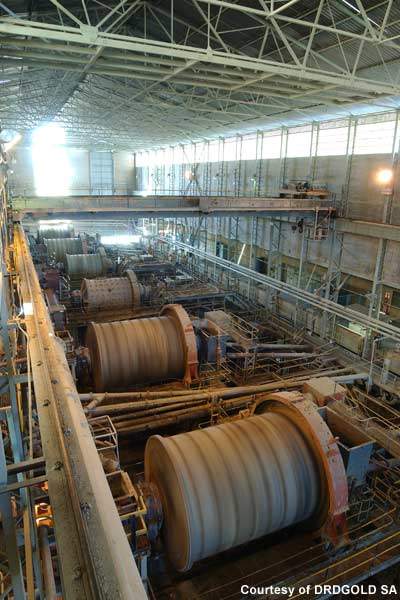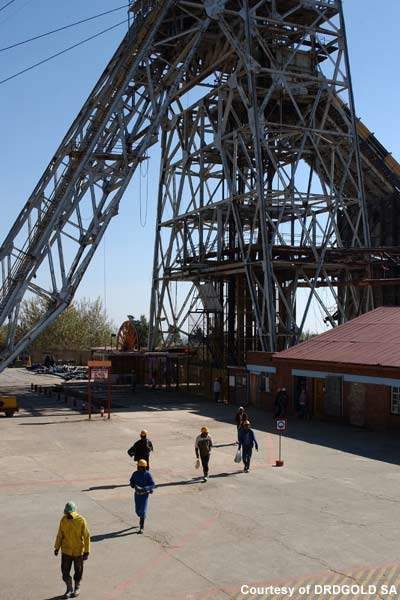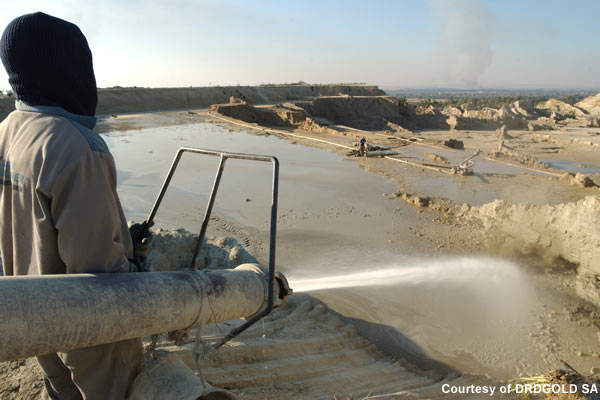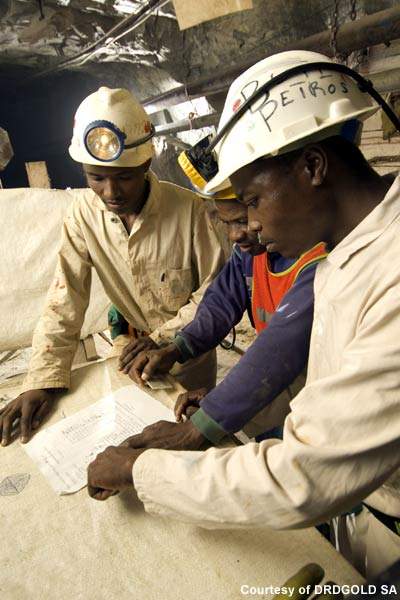Blyvoor is a gold-bearing mine 70km south-west of Johannesburg in the north-western extreme of the Witwatersrand Basin, South Africa. Established in 1937, Blyvoor was the first mine in the West Wits line. It has been operating since 1942. Since 1997 the mine has been owned and operated by DRDGOLD.
The mine was expected to last until 2030 although, due to its widespread reserve base, Blyvoor should continue production beyond that. A fall in average gold rand prices and higher power tariffs have, however, put the mine on the verge of liquidation. Monthly losses at Blyvoor amounted to almost $3.62m as of October 2009.
To save the mine from liquidation DRDGOLD plans to obtain a judicial management order from the high court. Under the order a judicial manager will be appointed to take various measures, including negotiating with creditors to defer payments.
Geology
Blyvoor contains two major gold-bearing horizons: Carbon Leader Reef (CLR), one of the main orebodies hosted in the Carletonville goldfield, and Main Reef, located 75m north of the CLR horizon. Both reef formations have thicknesses of 5cm to 20cm. Main Reef is currently the focus of activities.
Reserves
The mine contains an estimated 25.85mt of proven ore reserves. The identified attributable gold resources are estimated at 26.35mt.
Mining
Blyvoor is an underground mine. Ore is mined using conventional drill, blast and scape narrow-reef mining methods. Due to combined operations at Blyvoor and Doornfontein, ores have become accessible through a number of methods. Besides underground operations, gold is also produced from waste rock stockpiles and through retreatment of surface tailings.
Almost 30% of gold is produced from the re-treatment process. A carbon-in-leach (CIL) plant at the mine site processes almost 300,000t of slimes every month. The processing capacity of slimes re-treatment will be expanded to almost 400,000t a month, which involves an investment of between R10m and R15m.
Exploration
As of the end of 2009, the focus is on mining shaft four and shaft six, with some mining taking place at shaft five. To access the orebodies hosted between 27 and 35 levels from shaft five, the Way Ahead Project was initiated in July 2006. The project replaced phase two of the sub-shaft two project.
Apart from accessing the subshaft two reserves, the project included accessing additional reserves in the south-west block. By the first quarter of 2008, the first borehole between levels 31 and 33 was completed. The second borehole between levels 27 and 31 was completed by the first quarter of 2009.
During the fourth quarter of 2008 the mine experienced a significant reduction in grade, with the loss of several high-grade panels at shaft five.
Mining volume at the high-grade number five area was reduced due to a rise in seismic activity in the area. Mining activities were also increased at the lower-grade shafts number four and six.
At number six work commenced on the 15/29 incline project to explore the reserves of the main reef and CLR. The reserves, spread across 540,000m², have an average recovered grade of 4.8g/t.
Production, which was expected to start during the second quarter of 2009, was postponed due to supplier delays. As of the end of 2009, the sinking of the incline is in progress.
Safety
The mine has a reputation for safety. Blyvoor won the West Rand Mine Managers’ Association Safety Award for nine consecutive years. It also received the Minister of Minerals and Energy’s Safety Flag.







